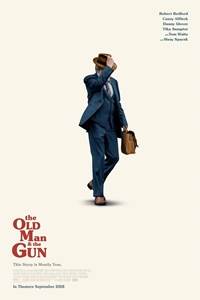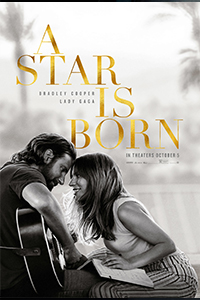‘The Happy Prince’ sheds light on Oscar Wilde’s cheerless years
Written and directed by: Rupert Everett
Starring: Rupert Everett, Colin Firth, Emily Watson, Edwin Thomas, and Tom Wilkinson
“The Happy Prince” – “Be yourself, everyone else is already taken.” – Oscar Wilde
Rupert Everett (“My Best Friend’s Wedding” (1997), “The Importance of Being Earnest” (2002)) wrote a screenplay about Oscar Wilde and shopped it around, but he could not find a director willing to bring his work to the big screen. Well, he took control of his own destiny and decided to film it himself, and this first-time director delivers a troubling and tragic portrayal, and in the process, Everett delivers a most absorbing performance.
The film’s title basks in cold irony, because Everett’s picture encompasses the cheerless, last few years of Wilde’s (Everett) life. The ugly times, when this worldwide and beloved prince of written-artistry fell into exile and rotted in unforgiving squalor due to societal views of his sexual duality. Wilde was imprisoned in 1895 for sodomy, and his fame instantly flipped to shame.
In an April 2018 interview, Everett said that “The Happy Prince” took 10 years to finish, but he was determined to see it through, because other Wilde biopics have concluded once the renowned writer was sentenced to prison. In Everett’s case, the bulk of his picture takes place after Wilde was released from incarceration.
“There is only one thing in the world worse than being talked about, and that is not being talked about.” – Oscar Wilde
In 1897, Wilde collapses into Parisian skid row. Except for two homeless kids who listen to his stories and accept an occasional di minimis handout, Wilde is friendless (at first) in Paris. He also copes with poor health and feels nearly-unbearable regret regarding his wife Constance (Emily Watson). Sorrow, injustice and poverty construct a trifecta of on-screen discouragement, and hopes for brighter times appear impossible given greater communal mindsets.
“The really interesting part, the romantic fantasy at the end of the 19th century’s melodrama and tragedy, is Wilde in exile. For me, it’s one of the great images (of the period),” Everett said.
Visually, the movie excels in two places. Everett shines a spotlight on the blight of Paris’ underclass, by spending precious minutes with the displaced and desperate, as they collectively agonize in the shadows. Wilde seamlessly blends into this world with an uncomfortable-comfort of belonging with orphaned children who beg for a spare franc or some bread. He is orphaned himself and partially-accepts his fate by serving a makeshift penance while also feeling the brunt of a terrible injustice. Second, his recent trauma has physically beaten him down. Everett truly is unrecognizable here, especially for those who have not really seen him since “My Best Friend’s Wedding”, which was released 21 years ago. To make this transformation, Everett wore a prosthetic fat suit and stuck projectiles inside his mouth to thrust out his cheeks. Add disheveled, scraggily hair and a constant five o’clock shadow (that keeps pushing six), and Wilde is a man without direction or hope.
Counter these impressions with his former bourgeois life. The film does present this side of Wilde, including his friendship with two trusty, wealthy allies from England – Reggie Turner (Colin Firth) and Robbie Ross (Edwin Thomas) – who come to his aid. Couple these warm reunions with frequent flashbacks to happier, more lucrative times, and the gravity of the poet’s free fall becomes painfully illustrated.
“I never travel without my diary. One should always have something sensational to read in the train.” - Oscar Wilde
Since Wilde was a poet, playwright and novelist, he had a skillful penchant for words, and throughout the picture - whether he aches on streets of despair or embraces a gilded hotel room - Everett ensures that his character’s thoughts become transparent to the audience through a carefully-crafted script. As poetic as Wilde was from pen to paper, his on-screen eloquence travels from his voice box to nearby ears just as effectively, which include recurring stories of The Happy Prince, and they are awfully symbolic.
No question, Everett delivers Wilde’s voice with prophetic magnitudes that constantly keep our anticipation for philosophical treasures. Mixed with his decline, “The Happy Prince” triggers a desperate urgency to listen with sky-high interest and eternal empathy.
The film occasionally jumps into the past without warning and sometimes oddly navigates from scene to scene in Wilde’s present. The man’s present was not pleasant, but offering congenial creature comforts is not the point, and while Everett’s organic approach does not always move the story in perfectly linear directions, he is effective in conveying Wilde’s experiences. Everett also consulted and leaned on Merlin Holland – Wilde’s grandson - to ensure that he authentically captured the famous writer’s last few years of existence. For the audience, this brand new director rewards us with a complete picture of Wilde.
“Behind every exquisite thing that existed, there was something tragic.” – Oscar Wilde
(3/4 stars)
Jeff – a member of the Phoenix Critics Circle – has penned film reviews since 2008 and graduated from ASU’s Walter Cronkite School of Journalism. Follow Jeff and the Phoenix Film Festival on Twitter @MitchFilmCritic and @PhoenixFilmFest, respectively.







































